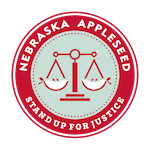johnc@cfra.org, Center for Rural Affairs
The Center for Rural Affairs was established in 1973 as an unaffiliated nonprofit corporation under IRS code 501(c)3. The Center for Rural Affairs was formed by rural Nebraskans concerned about family farms and rural communities, and we work to strengthen small businesses, family farms and ranches, and rural communities.
 I’m fortunate to live in a small, rural community with adequate access to health care providers. But research demonstrates that if the health care reform bill had not passed, one in three rural Americans living in communities with fewer than 2,500 people would have been uninsured by 2019.
I’m fortunate to live in a small, rural community with adequate access to health care providers. But research demonstrates that if the health care reform bill had not passed, one in three rural Americans living in communities with fewer than 2,500 people would have been uninsured by 2019.
Affordable health insurance coverage is not the only challenge facing rural communities, however. Much of rural America suffers from a severe health care workforce shortage and an economically fragile health care delivery system, ultimately affecting the health of rural people. Declining numbers of primary care providers lead to a lack of preventive care, resulting in more serious (and more expensive) medical problems down the road. Unfortunately, only 11 percent of clinically active physicians, who graduated from medical school between 1988 and 1997, practice in rural areas.
Access provisions turned out to be a major, but unsung part of the health care reform law. Insurance coverage and health care access represent opposite sides of the same coin. And if we hope to make health care more affordable and accessible – and people healthier – we must address both.
Moreover, access to medical care not only helps improve health outcomes, but acts as an important economic development strategy for many rural communities. I think every rural American concerned about the economic future of their community should read the new Center for Rural Affairs’ report – Health Care Reform, What’s in It? – which examines the rural health care access provisions in the newly enacted health care reform law.
